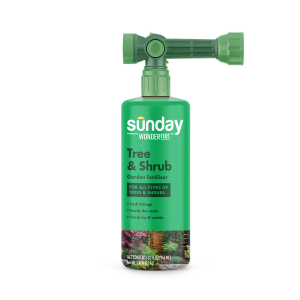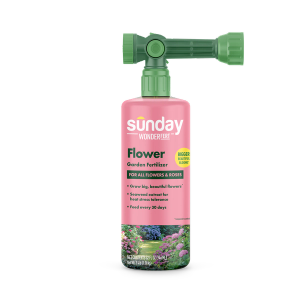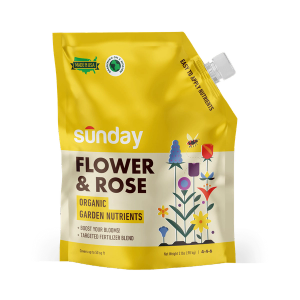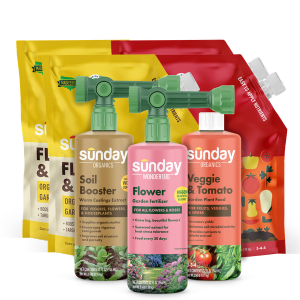What are invasive plants?
Invasive plant species are plants that:
- Are not native to a particular state or region
- Can or do cause economic, environmental, or human harm if introduced
Invasive plants are invasive because they tend to grow quickly, reproduce abundantly, and may not have natural predators in the invasive region that restrict their growth. There are over 1,300 plants that are invasive somewhere within the U.S., but it’s important to keep in mind that not all non-native plants are invasive and not all aggressively growing plants are invasive. There are plenty of fast growing native plants out there, too.
What’s the issue with invasive plants?
Not all invasive plants are regulated, and 60 percent of invasive plants are available for sale in the U.S.—many within areas where they are listed as invasive. This is a problem, because invasive plants can reduce biodiversity, wildlife habitat, and pollinator habitat and forage if they spread.
Sunday Tip:
Only 16 percent of ornamental plant vendors have restrictions on shipping invasive species. But did you know that Sunday restricts sales of plants that are invasive or restricted in your state to help prevent the spread of invasive plants?
Common invasive plants in lawns and gardens
There are a lot of ornamental landscaping plants that are invasive across the U.S.—too many to list them all here. That being said, there are a few common plants that pop up in lawns or that are sold in garden centers that you should avoid planting and remove from the landscape if they’re listed in your state, including:
- Bamboo (Phyllostachys spp.)
- Bittersweet vine (Celastrus orbiculatus)
- Burning bush (Euonymus alatus)
- Butterfly bush (Buddleja davidii)
- English ivy (Hedera helix)
- Field bindweed (Convolvulus arvensis)
- Honeysuckle (Lonicera spp.)
- Japanese barberry (Berberis thunbergii)
- Purple loosestrife (Lythrum salicaria)
For more information on which plants are invasive in your state, check your state government websites or reach out to your local extension agency.
How to get rid of invasive plants
If you do determine that something already in your yard is an invasive plant species, try the following tips to reduce spread and remove from the landscape:
- Remove flowers and seed heads. Removing flowers and seeds will help prevent the plant from spreading.
- Dig up, cut down, or treat herbaceous invasives. Hand weed or dig up if the plant is small, making sure to get the entire root system out of the ground. If you have larger, well established invasives, you can cut low before they produce seed and spray, wick, or dab cut stems with targeted herbicides (check with your local extension agency for more information on chemical use).
- Treat tricky woody invasives. Smaller woody plants can be dug up, but sometimes pesticides are necessary, particularly when it comes to large invasive trees and shrubs. Consult your local extension agency for more information on how to target specific invasive plants safely and effectively.
- Dispose of invasive material properly. Do not add invasive plant parts to compost bins or natural areas. Instead, bag and dispose of invasive plants or plant parts in the trash.
- Replant. Plant areas where invasive plants were removed to help fill in the area, cover the soil, and prevent the spread or return of the invasive species.
Generally speaking, spring is the best time for hand pulling, summer is the time to cut back larger invasive plants, and fall is when you should do a second cut and apply herbicides, if necessary.
Don’t get discouraged if the invasive plant comes back for a few seasons. Remember, these plants are invasive because they are really good at handling tough conditions and growing rapidly. Reductions are better than doing nothing, even if you can’t remove the plant entirely on the first try. It might take a few seasons to fully eradicate the invasives in your yard, but persistence will pay off in the long run!
How to prevent the spread of invasive plants
Many invasive plants are very difficult to control once established; that is, after all, how they become invasive. That’s why prevention is key! To prevent the entry and spread of invasives in and around your home ecosystem, research plants before buying, and never purchase or plant species that are listed as invasive in your state or region.
If there’s an invasive plant you particularly like the look of, check for alternatives that are native or adapted and free of invasive tendencies. Many native or non-invasive plants can fulfill the same function—whether that be pollinator support, privacy, foliage or bloom color, or fragrance.
Cited sources
Invaders for sale: The ongoing spread of invasive species by the plant trade industry. Frontiers in Ecology and the Environment.
Invasive Species in Your Landscape. West Virginia University Extension.
Understanding and managing invasive plant species. Michigan State University Extension.



















